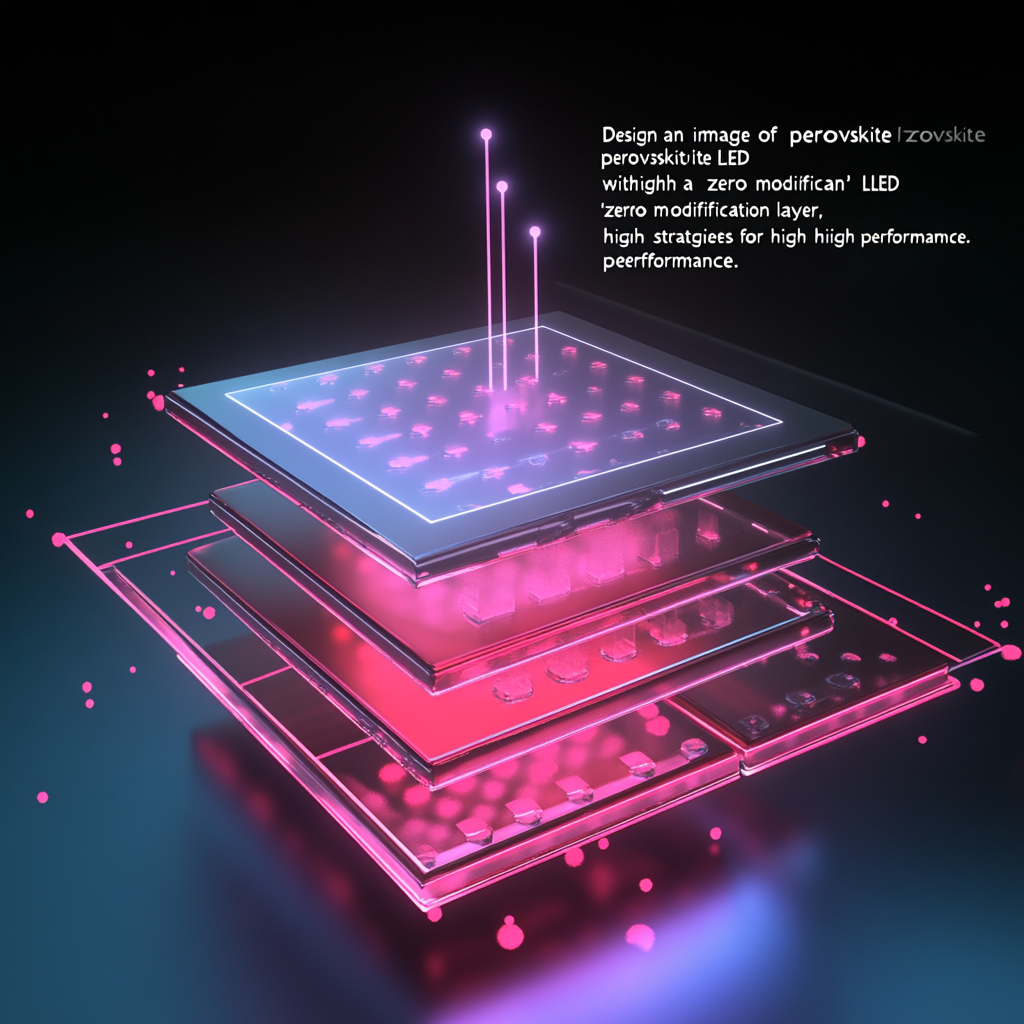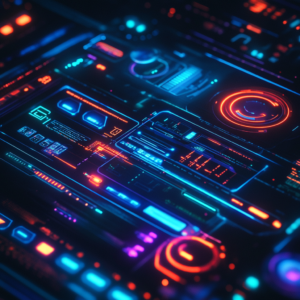
‘Zero modification’ emission layer can achieve high-performance perovskite LEDs
The Groundbreaking “Zero Modification” Emission Layer: The New Frontier in Perovskite LEDs
Imagine yourself walking into a room where the lighting is not just bright but vibrant; colors leap off the walls as if they were alive. This isn’t a scene from a sci-fi movie; it’s the future of display technology, and it’s happening right now thanks to perovskite light-emitting diodes (LEDs). But here’s the twist – these incredible feats of engineering come with a “zero modification” emission layer. Yes, you read that right. It’s a revolution where you don’t need to change a thing in the perovskite material itself to achieve groundbreaking efficiency. Let’s dive into this intriguing world!
Perovskites: The Unsung Heroes of Lighting
Perovskites are the superheroes of the semiconductor realm. These materials have a crystal structure that’s as complex as your favorite detective novel, offering unique properties such as remarkable light absorption and a photoluminescence efficiency that has researchers frothing at the mouth. But there’s a crucial element here: most efforts to enhance their performance traditionally involve tweaking the materials chemically or structurally. Enter “zero modification,” a term that’s shaking things up like an unexpected plot twist in your favorite series.
Picture this: Instead of modifying the perovskites themselves, researchers are coming up with clever ways to optimize the layers surrounding these materials. It’s like making your favorite dish even tastier without changing its core recipe – a surprising yet effective approach!
What’s the Big Deal with “Zero Modification”?
- Charge Transport Mastery: Let’s talk about transport layers. It’s all about balance, much like a good dance: electrons need to mingle harmoniously with holes (the absence of electrons). In ultrathin perovskite nanocrystal LEDs, this balance is orchestrated exquisitely using nickel oxide, achieving an external quantum efficiency (EQE) upwards of 26.7% [2]. Imagine your favorite band playing perfectly in sync – that’s this technology in a nutshell.
- Atomic Layer Craftsmanship: Researchers have discovered that by controlling the atomic layers in perovskite nanoplates, they can achieve colors as distinct as the rainbow without altering the perovskite itself. It reached dizzying heights of 26.8% EQE while maintaining color stability that would make an artist’s palette jealous [3]. Talk about fine-tuning a masterpiece!
- Interfacial Engineering Relay: Rather than tampering with perovskites, the focus shifts to improving energy alignment in adjacent layers. Replacing traditional materials with poly-TPD in near-infrared LEDs skyrocketed EQE from a paltry 12.9% to an impressive 20.2% [1]. It’s as if the supporting cast in a play suddenly started performing lead roles!
Why This Matters: More Than Just Numbers
The implications of these breakthroughs stretch far beyond research labs. They open a door to a dazzling future where displays are not only thinner and lighter but also more vibrant and stable. Imagine screens that last longer and shine brighter, redefining our experiences with technology. Gone will be the days of watching your favorite films on lackluster screens; we’ll be immersed in an ocean of vivid colors that dance before our eyes.
But there’s more – let’s not forget the mainstream impact. The “zero modification” approach strips away the burdens of complex manufacturing processes, making innovation accessible to smaller players in the marketplace. Envision a world where the cost of advanced LED technology drops, bringing us closer to smart devices and futuristic gadgets without breaking the bank.
Yet, Every Hero Faces Challenges
It’s not all sunshine and rainbows; challenges linger just beyond the horizon. The quest for blue emission lags, like the final boss in a video game that just won’t budge. Additionally, managing efficiency roll-off at high currents remains a formidable challenge. Stability under pressure, especially in applications that generate heat, requires more tinkering. But here’s the good news: every challenge is just an opportunity in disguise. With continued effort, these hurdles can be overcome, inching closer to commercial viability.
A New Dawn for Displays
The embrace of the “zero modification” strategy isn’t just a minor tweak; it’s a bold statement in the realm of material science. By taking full advantage of what perovskites naturally offer and enhancing their performance through clever engineering, we are witnessing a refreshing reshaping of what’s possible. As these exciting innovations inch closer to market reality, it feels like the dawn of a new era in display technology.
Want to stay up to date with the latest news on neural networks and automation? Subscribe to our Telegram channel: @channel_neirotoken

